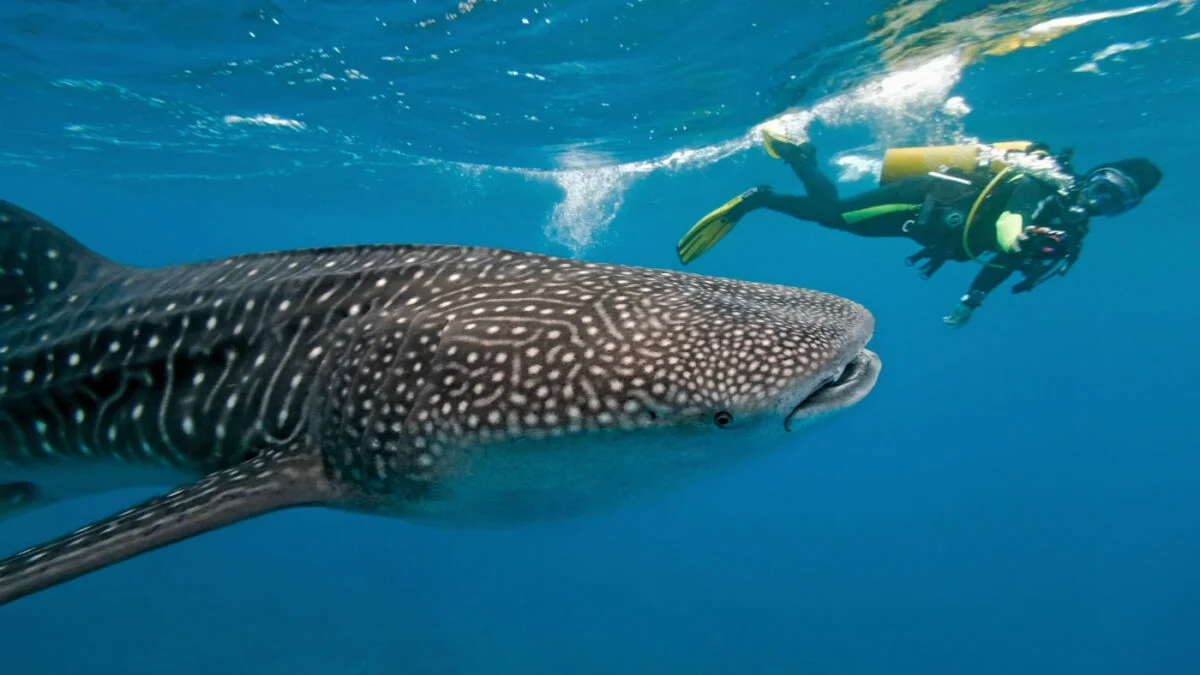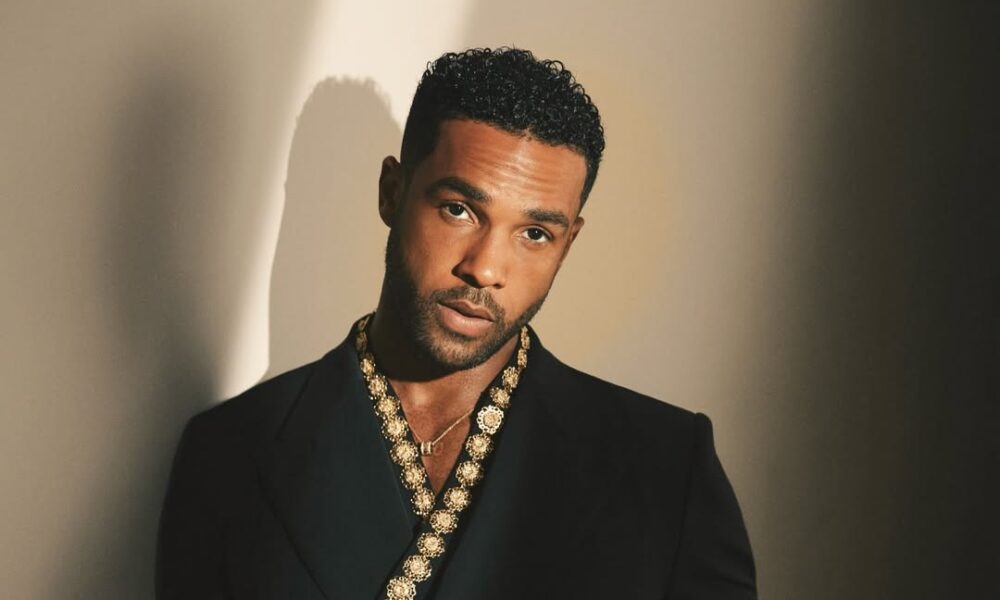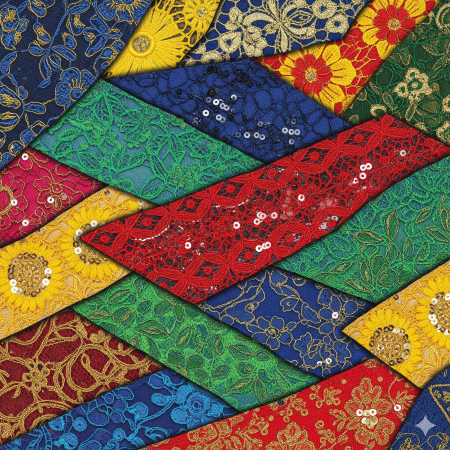The Beauty of Whale Shark Diving in Mozambique

Mozambique, a sun-drenched jewel on Africa’s southeast coast, is steadily making its mark on the world’s marine tourism map, and for good reason. With vast stretches of Indian Ocean shoreline, this coastal paradise offers more than just palm-fringed beaches and tropical breezes.
For those seeking a truly unforgettable underwater adventure, Mozambique is one of the finest places on Earth to dive or snorkel alongside the largest fish in the sea — the whale shark.
Meet the Gentle Giant: The Whale Shark
Image Credit: Ocean Life Education
Despite their name, whale sharks are not whales but the largest species of fish alive today. These gentle giants can grow up to 18 meters long and weigh more than 20 tons, yet they pose no threat to humans.
Their massive mouths, which can span over a meter wide, are used to filter feed on plankton and tiny fish. With their calm demeanor and slow, graceful movements, whale sharks are often described as the ocean's gentle giants.
Fun fact: Each whale shark has a unique pattern of spots and stripes on its body, much like a human fingerprint. Scientists use these markings to identify and track individual sharks over time.
Mozambique’s Best Dive Destinations
Image Credit: Trip Advisor
The country’s most famous location for whale shark diving is Tofo Beach, often called the Whale Shark Capital of Africa. Located in the Inhambane province, Tofo offers high chances of spotting multiple whale sharks in a single trip. Nearby Barra Beach and the Bazaruto Archipelago also offer incredible opportunities, with pristine reefs and a rich array of marine life.
Tofo Beach features daily diving and snorkelling excursions, where whale sharks, manta rays, dolphins, and turtles are commonly seen.
Barra is known for its involvement in marine research and offers chances to contribute to whale shark conservation efforts.
Bazaruto Archipelago boasts crystal-clear waters and unspoiled reefs, though it is best visited outside the cyclone-prone month of February.
When and How to See Whale Sharks
The best time to visit Mozambique for whale shark encounters is between October and March, when plankton blooms attract large numbers of these filter feeders. However, sightings are possible throughout the year thanks to a local resident population. The beauty of whale shark tourism in Mozambique is that you do not need to be a scuba diver to participate. Many of the encounters occur near the surface, making snorkelling a popular and accessible option for all ages.
Most of the whale sharks seen in Mozambique are infants, measuring between 5 and 10 meters long. Despite their enormous size, they are harmless to humans and often seem curious about swimmers nearby.
A Diverse Marine Ecosystem
Image Above: Manta Ray. Credit: Mozambique Travel
While whale sharks are the main attraction, Mozambique’s reefs are bursting with life. Divers and snorkellers regularly encountermanta rays, sea turtles, dolphins, and an astonishing variety of colorful reef fish. The coral formations in these areas are among the healthiest in the region, providing a vibrant backdrop for underwater exploration.
Responsible Tourism and Conservation
With growing interest in marine tourism, there is also growing responsibility. Ethical whale shark tourism is crucial to ensure the health and longevity of the species in Mozambican waters. Visitors are strongly encouraged to choose eco-certified dive operators who follow international guidelines for marine wildlife encounters. These include keeping a respectful distance from the animals, never touching or chasing them, and avoiding flash photography.
In Tofo and Barra, several operators partner with marine research organizations, giving tourists the chance to assist with ongoing conservation projects. Tourists can participate in data collection, help identify individual sharks through photos, and join educational tours about marine ecology.
Dive Packages and Logistics
Image Credit: Mozambique Diving
Dive centers across the region offer well-rounded packages that typically include accommodation, daily snorkel or dive trips, gear rental, and optional PADI certification courses.
For those who want to extend their trip, combination tours that include both Mozambique and neighboring South Africa are available, offering a broader look at the region’s marine and terrestrial wonders.
You will need at least an Open Water certification to scuba dive, but snorkelling trips require no prior experience. For both activities, packing essentials include swimwear, mask and fins, reef-safe sunscreen, and a respectful attitude toward marine life.
Tips for Planning Your Trip
Best Time to Visit: October to March is the peak season for whale shark sightings.
Avoid February if visiting Bazaruto due to possible cyclones.
Choose Ethical Operators: Look for those involved in conservation and research.
Get Certified: If you’re not already a diver, Tofo is a great place to learn.
Bring a Camera: But make sure it is waterproof and used respectfully around wildlife.
Conclusion
Whale shark diving in Mozambique is not just an adventure — it is a chance to connect with one of nature’s most awe-inspiring creatures in one of the most pristine marine environments on the planet.
Whether you are swimming just meters away from a spotted giant in Tofo, learning about conservation in Barra, or gliding through turquoise waters in Bazaruto, the experience will stay with you long after you leave the sea behind. It is an encounter that stirs both the soul and the senses, reminding us of the beauty and fragility of the ocean world.
Cover Image Credit: Pura Vida Lodge
You may also like...
Arsenal Legend Thierry Henry to Receive Prestigious BBC Lifetime Achievement Award

Former Arsenal and France football legend Thierry Henry will be honored with the Lifetime Achievement award at the 2025 ...
Maresca's Emotional Rollercoaster: Chelsea Boss Claims 'Happy' After 'Worst 48 Hours'

Chelsea boss Enzo Maresca has clarified his previous 'worst 48 hours' comments, now expressing happiness and a deeper co...
Fallout Season 2 Shatters Records, Outperforming HBO's Last of Us!

Fallout Season 2 has premiered on Prime Video to overwhelmingly positive critical and audience reception, scoring a near...
Winter Is Back! Kit Harington Hints at Massive Game of Thrones Comeback

Kit Harington has definitively shut down any possibility of reprising his role as Jon Snow, stating he doesn't want to g...
Love Blossoms: Anwuli & Kennedy's Instagram Romance Leads to #HappilyEverOffor!

Anwuli and Kennedy's love story, sparked by an Instagram connection, led to a beautiful Igbo traditional wedding. After ...
Teyana Taylor & Lucien Laviscount Light Up the 'Spirit Tunnel' with Epic Dance Moves!

The Jennifer Hudson Show features high-energy 'Spirit Tunnel' entrances, with Lucien Laviscount making a stylish walk an...
Kenya's Billion-Shilling Travel Bill: Austerity Pledge Broken?

The Kenyan government spent nearly Sh5 billion on travel in the first three months of FY 2025/26, raising concerns about...
Shehu Sani Urges Nigerians: Shun US Travel Ban, Build Nation

The United States has enacted new travel restrictions impacting Nigerian nationals, covering both immigrant and several ...






